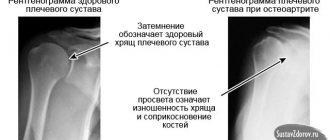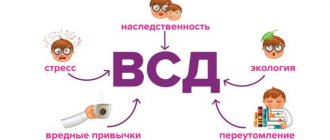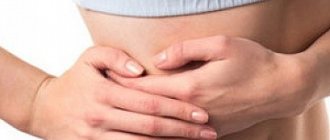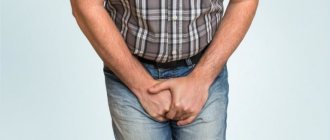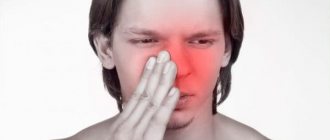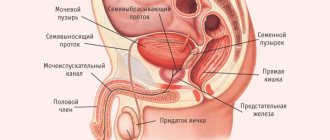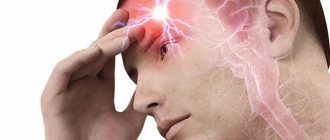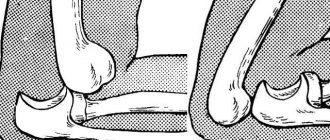Jaw pain is an extremely unpleasant symptom of a large number of diseases. In order to get rid of discomfort as soon as possible, it is necessary to identify the cause of its occurrence with the help of a medical specialist and begin treatment immediately.
Sometimes the occurrence of pain in the jaw indicates pathologies of other body systems, for example, the cardiovascular system.
Causes
Accurate and timely identification of the cause of pain when chewing food contributes to the correct diagnosis and provision of appropriate therapeutic procedures.
There are several large groups of factors that influence the occurrence of pain in the jaw apparatus.
Injuries
Mechanical injury to the jaw is often due to the following reasons:
- A bruise caused by a strong blow or fall . The bones of the jaw apparatus retain their integrity, however, damage to the soft tissue occurs. When opening the mouth, pain occurs, a bruise forms and slight swelling of the damaged area of the skin. As a rule, all symptoms disappear within 2-3 days.
- Dislocation. This situation is possible with a sharp opening of the mouth, yawning, laughing, or opening a bottle with the teeth. Pathology often occurs when a person has joint diseases. The dislocation looks like this: the lower jaw is fixed with a skew to one side when the mouth is open. To get rid of a dislocation you will need the help of a traumatologist.
- Fracture of the upper or lower jaw. This problem is a consequence of mechanical trauma, such as a strong blow, an accident, or a fall from a height. There are fractures of both one and both jaws at the same time. In addition to acute pain, a fracture is characterized by the inability to chew, swelling and bruising.
- Traumatic osteomyelitis. The main cause of this disease of the jaw bones is an untreated fracture, complicated by low immunity and the presence of foci of infection in the oral cavity. Often the cause of the development of pathology is an infected tooth, from which the infection spreads into the jaw tissue. Osteomyelitis is characterized by throbbing pain and increased body temperature.
- Chronic subluxation of the lower jaw. This condition occurs as a result of certain actions, such as coughing, yawning, laughing, and is characterized by a displacement of the jaw forward or to one side. The situation is a consequence of stretching of the fibrous tissue surrounding the joint between the lower jaw and the socket of the temporal bone, as a result of the lack of proper fixation of the articulation of the bones.
Consequences of wearing dentures or braces
The use of various orthodontic structures designed to correct the bite may be accompanied by minor pain, especially during the adjustment period.
Such devices are located on the teeth and promote their movement relative to the dentoalveolar line, which leads to the formation of uncomfortable sensations. This indicates that the process of correcting a pathological bite is proceeding correctly.
Important! If pain when using orthodontic appliances increases over time and interferes with eating or communicating, you should consult a dentist.
Installation of prostheses to restore lost crowns can also lead to slight pain during the initial stages of their use. After some time, the pain will disappear.
If this does not happen, you should consult a dentist to eliminate the possibility of incorrect installation of the orthopedic structure and the presence of an inflammatory process.
Instructions and recommendations for using the luxury white pro teeth whitening pencil and consumer reviews. Read here whether it is possible to treat a nursing mother’s teeth with anesthesia or painkillers.
At this address https://dr-zubov.ru/ortodontiya/prikus/primenenie-miogimnastiki.html we offer information about myogymnastics for the tongue in orthodontics.
Dental diseases
The presence of certain dental diseases can cause pain when chewing:
- Pulpitis. The inflammatory process affecting the dental nerve is accompanied by the occurrence of paroxysmal pain, intensifying at night. In addition to the affected tooth, pain often spreads to the zygomatic, occipital region or to the opposite jaw.
- Periodontitis. Jaw pain in this disease is acute in nature, which is characterized by an increase and pulsation with an exacerbation of the process. When eating and pressing on the jaw, the pain intensifies.
- Alveolitis. The pain from the inflamed hole can radiate to the entire jaw, interfering with chewing food. In the absence of timely treatment, the disease can develop into the form of limited osteomyelitis, accompanied by purulent melting of the jaw bones.
Wisdom teeth eruption
The growth of molars is often accompanied by pain. This is due to the fact that the jaw is already formed and there may not be enough space for the growth of additional molars.
This can lead to the appearance of impacted or dystopic crowns.
The eruption of these molars may be accompanied by aching pain in the cheek area, spreading to the throat and ear, difficulty chewing and swallowing, and inflammation of the bones and muscles located in the area of tooth growth.
If you experience pain associated with the eruption of molar crowns, you should contact your dentist to avoid the formation of inflammatory processes due to their improper location.
Malocclusion
The pathological location of the crowns relative to the line of the dentition can cause pain during chewing. This is due to improper distribution of loads and the need to apply additional effort.
A pathological bite may be accompanied by pain when opening the mouth, chewing, talking, headaches, and spasms of the jaw muscles.
This situation requires immediate attention to the dentist, since if left untreated, it can lead to the formation of dislocations caused by weakening of the ligaments due to improper positioning of the temporomandibular joint.
Purulent-inflammatory diseases
An acute purulent process is another possible cause of pain in one of the jaws. The most common diseases are:
- Osteomyelitis is characterized by inflammation of soft and bone tissue. It is accompanied by sore teeth, spreading to the entire jaw, swelling of the face and its asymmetry.
- The boil is accompanied by the development of acute purulent inflammation of the skin. Often the area of spread of the disease is limited, but has pronounced pain.
- An abscess most often develops against the background of mechanical damage to the jaw and concomitant infection. When the disease occurs in the upper jaw, difficulties in opening the mouth and swallowing are characteristic; in the lower jaw, pain occurs when chewing. Externally, the abscess is expressed in swelling of the submandibular triangle and distortion of the shape of the face.
- Phlegmon. The symptoms of this pathology resemble osteomyelitis - sharp pain in the jaw row or under it, swelling of the face, fever. The area of inflammation in this disease tends to spread.
Tumors
Soreness of the jaw during chewing in the absence of any trauma or inflammatory processes may indicate the presence of a benign or malignant neoplasm in the body.
Often such pain is mildly chronic, regardless of the type of tumor.
The following types of tumors are considered benign:
- adamantioma is characterized by an increase in the size of the jaw, which leads to difficulty and pain in the process of chewing food, which gradually intensifies as the tumor grows;
- osteoma is a tumor that slowly grows from bone tissue and is accompanied by malocclusion, jaw deformation and limited opening of the oral cavity;
- Osteoblastoclastoma is accompanied by a slight aching pain, which gradually increases, and as the tumor grows, it becomes incessant.
Malignant neoplasms include osteosarcoma and cancer. These diseases are accompanied by pain when pressing on the jaw, severe pain near the ear or in the neck area, deformation of the jaw bones .
In this case, the area with the most severe pain can be found in the chin area.
What are acetal dentures, their manufacturing technology and indications for use. This article contains details of mandibular vestibuloplasty in children and adults.
Follow the link https://dr-zubov.ru/krasota-i-uxod/sredstva/zubnye-shhetki/ultrazvukovye-philips-sonicare-novyj-podxod-k-ezhednevnoj-zabote.html if you are interested in the characteristics of the Philips ultrasonic toothbrush .
Neuralgia
Damage to certain nerves can also cause pain that radiates to the jaw. This often occurs due to the following inflammations:
- Damage to the ternary nerve causes sharp paroxysmal pain, which is concentrated on one side and intensifies at night. In this case, the pain does not extend to the back area of the jaw.
- Inflammation of the superior laryngeal nerve is accompanied by severe pain on one side of the submandibular region, which can move to the area of the face and chest. The greatest intensity of painful sensations occurs when chewing or yawning.
- The key symptom of glossopharyngeal neuralgia is severe pain in the tongue, gradually spreading to the lower jaw and face. It usually occurs during communication or eating. The pain is paroxysmal in nature, lasts about 2-3 minutes, after which it subsides.
- Carotidynia is a type of migraine caused by carotid artery disease. The pain occurs in attacks and lasts up to several hours. It is usually localized on one side of the upper jaw, gradually radiating into the lower dental row, face, and ear.
Pain near the ear
Painful sensations when chewing, radiating to the ear, are characteristic of diseases of the temporomandibular joint - arthritis, arthrosis and dysfunction.
These joint pathologies can be caused by infection, hypothermia, high load, mechanical damage, or malocclusion.
Articular diseases of the jaw are characterized by incessant aching pain that flows into the ear area, discomfort and crunching when opening the mouth and chewing. In some cases, pain can spread to the entire face.
For more information about the causes of pain in the jaw joint, watch the video.
Locations of pain
Sometimes the pain in the jaw can be so severe that it is not possible to understand exactly where it hurts. However, if not the entire jaw hurts, then in some cases it is possible to determine a specific location:
- Near the ear on the left or right side of the face.
- Pain in the lymph nodes under the jaw.
- Pain occurs only when the facial muscles move, for example, when opening the mouth.
- Pain on the right or left side.
- Discomfort is felt only in the lower jaw.
The reasons for the formation of such pathology may be different, depending on the nature of the disease.
To identify it, establish an accurate diagnosis and prescribe the most effective treatment, you must urgently consult a specialist doctor.
Treatment options
The method of eliminating jaw pain depends on the cause of its occurrence, established during the preliminary examination:
- if there is a bruise, a fixing bandage is applied and compresses are prescribed;
- a dislocation requires the jaw to be realigned by a traumatologist and a bandage applied;
- acute purulent diseases are treated in a hospital setting with antibiotics;
- in the presence of abscesses, they are opened and the purulent filling is removed;
- carotidynia requires the prescription of painkillers and antidepressants;
- pain caused by an impacted wisdom tooth is eliminated after its complete eruption, which is facilitated by a small surgical incision;
- in the presence of neoplasms that cause pain in the jaw area, they are treated surgically using chemotherapy if necessary.
With the permission of the attending physician, folk remedies can be used as an addition to drug therapy. Here is one of them:
- 20 grams of crushed coltsfoot and oregano herbs are placed in a small container, 500 ml of vodka is poured in and infused in a dark place for 3-4 days.
- After this time, the tincture is filtered and used to rub the area with high pain.
- The duration of such treatment should not exceed 10 days.
Therapeutic gymnastics also helps to cope with jaw pain. Orthodontists recommend performing the following exercises:
- Smile with closed lips.
- Sequential lifting of the upper and lower lips until the teeth are exposed.
- Puffing and retraction of the cheeks.
- Closing lips with a tube.
Each exercise must be performed 8-10 times twice a day. After finishing the gymnastic procedures, the face should be relaxed and lightly massaged.
Periodontitis of the tooth
The periodontium is usually called a complex of tissues that are located in the gap between the roots of the tooth and the bone. Such inflammatory diseases of the human jaw are acute and require timely provision of dental care.
Periodontitis
Symptoms and diagnosis of periodontitis
The main sign of inflammation of the peri-root tissues is constant intense pain in the area of the causative tooth. A damaged tooth becomes sharply painful to the touch, and patients often claim that it seems to have grown out of the jaw.
During an examination of the patient, the dentist finds a deep carious cavity connected to the pulp chamber. Probing of such a defect is usually painless. In such cases, dental diagnostic instructions require radiography.
The exact form and stage of periodontitis is determined only after studying an X-ray image of the causative tooth.
Treatment methods for periodontitis
Periodontitis therapy is based on tooth depulpation, root canal cleaning and tooth filling. This treatment can last 1-2 weeks, depending on the form of the disease.
Prevention
To avoid jaw pain, you must adhere to the following rules:
- avoid hypothermia;
- timely cure viral and dental diseases;
- consume enough vitamins;
- stop using chewing gum;
- apply local self-massage of the jaw;
- perform myogymnastic exercises;
- Make sure that while sleeping your head is raised above the bed by 30 cm.
Trigeminal nerve diseases
Lesions of the trigeminal nerve in the maxillofacial region can occur in the following forms:
- neuralgia - acute damage to the sensory fibers of the trigeminal nerve, which is accompanied by intense attacks of pain;
- neuritis is a functional disorder of the outer nerve sheath, which causes a disturbance in the sensitivity of a certain area of the face;
- neuropathy is dystrophic damage to nerve fibers, which causes changes in the sensitivity of nerve endings and periodic attacks of pain.
Diagnosis of maxillofacial pathologies is carried out by a dentist based on the results of collecting a medical history, examination of the oral cavity and data from additional examination methods (electroodontometry, radiography, computed tomography and magnetic resonance imaging). In difficult cases or if there is a suspicion of cancer, the specialist resorts to a biopsy.
Painful sensations near the ear
This symptom is characteristic of pathologies of the temporomandibular joint.
There are three main manifestations related to this type - arthrosis, arthritis and dysfunction
. In the presence of each of these diseases, the symptoms are very characteristic - this is not just pain in the jaw when chewing, but at the same time it also radiates to the ear. In rare cases, such sensations extend only to the ear.
Then these diseases may even be confused with otitis media
– inflammation of the ear – until pain when chewing also appears. Also, along with severe painful sensations, a burning sensation may appear.
To eliminate the symptoms and causes, a whole range of measures is usually used, which includes orthodontic treatment, wearing trainers, prosthetics, treatment and re-treatment of teeth, as well as surgical interventions. Acupuncture may also be used.
Without treatment for such diseases, severe deterioration in the functioning of the joint is possible, even up to its complete immobilization. And since diagnosis is very difficult, during a visit the dentist must definitely prescribe an x-ray of this particular area.
Accurate diagnosis
Since the jaw joint has a complex structure, there are many possible causes for the development of arthrosis. This significantly complicates the process of diagnosing and identifying the problem causing it. The dentist questions and examines the patient for facial asymmetry, sunken lips, cracks in their corners, palpates the muscles, determining the stiffness of movements. The doctor will determine arthrosis of the jaw joint immediately after these actions.
To determine the stage of development of the disease and its localization, radiography is most often used. An x-ray allows you to see the resulting deformations, bone growths, and changes in their shape. Less commonly used are CT scans, electromyography, contrast radiography, or braces (orthodontic brackets).

